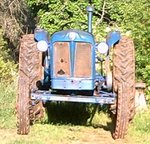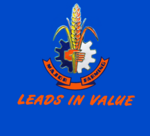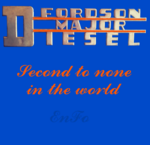Hi all,
I have decided I should inform readers of issues relating to the inaccuracy of engine blocks and additional things that further distort an engine block.
First, I will declare that I come from both sides of the fence I have General Motors and Ford products back to the 1920's and will quote as required with no favoritism, ( hopefully )
I am also a Machinist by trade and have worked on engines since the 1970's
People in general seem to think that once an engine block is cast and assembled that everything is set in stone, I am here to tell you that this is most definitely is not the case. Yes cast Iron is a fairly ridged metal with some good points, however it can, and does move during use.
To put things into perspective the engine bearing clearances are generally between .0025 and .0055 ( imperial taken to the 4th decimal place ) with a piece of photocopy paper at .0040 and a piece of aluminum foil from the kitchen being .0005 ( 1/2 a thou )
With engine bearings there is always a crush on the bearing shells, and this needs to be maintained to keep bearing shells tight to prevent movement which is often evident in Majors, Dexta's and Thames trader 6cyl engines by the grey polish marks in the bearing block bores from rubbing.
The main bearing caps always stretch, this occurs for several reasons.
1 the bearing shell crush pressure,
2 working load and
3 settling cast iron.
Now this stretch is often as little as .001 which does not sound like much, however this combined with insufficient bearing crush and the multiplied effect through the circumference can result in close to .003 ( 3 thou ) clearance, so if remedial action is not taken to take the bearing back to the minimum bearing clearance, it will not give a proper engine life and fail prematurely.
Now don't get smart and think that you can just carefully rub down the bearing caps and take out the bearing cap bore ovality, because you may end up with the situation where the crankshaft will not turn at all.
The other thing that occurs is the block is not straight front to back and crankshafts don't like working around corners each revolution.
People rubbing or filing down main bearing caps instead of replacing a crankshaft are a real headache, I recently started to put an engine together with a fresh ground crankshaft with the right size engine main bearings, only to find the crank would not turn, measuring the bearing cap bores I found that someone had filed down one cap to below the minimum size, so the only way I could fix the problem was to fit a slightly worn crankshaft, which I would rather have not done! ( fortunately I had such a crankshaft )
If you are having an engine built by a business, basically it comes down to your budget and the machine shops willingness and ability. If a machine shop does not have the machinery to bore out main bearing caps they will not always tell you this, and just give you with a lesser quality job.
I had an instance where I requested that a performance Holden engine block ( a GM Product ) have the main bearing bores bored out, only to be told by my engine machinist it would be too expensive at about $1000, so reluctantly I didn't have it done, this turned out to be a bad Idea.
On assembling the engine I ran into trouble getting the crankshaft to revolve, I ended up taking it 200kms away and had the main bearing bored out for just $250, problem solved.
These 6cylinder engine blocks at their length are normally bent .003 front to back from cast iron shrinkage.
I don't deal with the local guy any more!
Some people who should know better get things wrong also, such as a very experienced racing team manager ( now late ) who published a booklet about his brand of race car the Holden Torana he also quoted this .003 block misalignment as being a factory machining inaccuracy.
As it happens, I am a Machinist by trade and I know it is highly unlikely the main bearing bores were machined out of alignment by Holden.
In any case this does not explain each engine manufacturer, whatever their brand has the same "block bend" issue.
Weather it was forgetfulness of this race car driver at old age or not, I will never know.
Certainly, what is definitely known is that engine blocks take time to settle after they have been cast in the foundry, this setting ( shrinking ) is a longer time than the week or two in that a vehicle is produced, this means that almost all manufacturers will have engine blocks bending to some degree during the first few weeks of a vehicles life and continued thereafter.
The Fordson Major engine blocks also are bent a little from front to back, but apart from that, because of their construction and the main bearings also stretching resulting in very little crush holding the bearing shells in place and near maximum bearing clearances even with new components.
The 6cyl Thames trader engine ( 590 E ) due to the increased block length has a major problem with block bending ( shrinking ) and from the blocks in which I have had the main bearing caps bored out, I estimate that blocks bend between .010 and .015 which when occurring gradually from new tends to wear the crankshaft badly from the side pressure this exerts, and when other factors like diesel leakage from injector bleed off lines improperly fitted by Ford with no sealing washers each side of the banjo fittings, together with any leaking piston liners, the crankshafts suffer terribly!
I have pulled down a 590E engines with a bent block, leaking bleed-off line, a leaking piston liner, loose bearing shells, stretched main caps, a broken main bearing bolt and cracked engine block through the head bolt holes, needless to say that crank was not in good shape.
A Dexta engine I am working on at the moment also has the same main bearing problems and I require to have the main bearing block bores machined out, back to straight and circular.
As I said all engines made of cast iron have these issues, but not everyone takes the time or has the knowledge to look into this.
Basically, unless an engine block has previously had the main bearing block bores machined out through a rebuild, it should have them done to get a good job and long service life.
If you have a 590 E engine to fit to a Fordson the first thing that should be done is check the condition of the crankshaft and the rear main seal for leaks, often there will be a crankshaft issue to rectify, see above.
If you have an engine block that has been badly overheated all bets are off, the cast iron can soften and the cast iron can move and settle again, if there is a choice always go for an engine block that has not been overheated.
Mike.
Engine block inaccuracies normal
-
1962 model
- True Blue
- Posts: 170
- Joined: Wed Feb 02, 2011 12:01 pm
- Location: West Australia
Re: Engine block inaccuracies normal
Very good idea Mike, and definitely something to check whenever we get a 6 cylinder engine.
Sandy
Sandy
Re: Engine block inaccuracies normal
Hi Mike:
Thanks for your timely write-up. I am in the process of re-building a 1952 Fordson Major petrol engine. The crank is getting ground and we are expecting to go 0.010" oversize for both the mains and big end bearings. I will discuss with the machine shop about getting the mains checked for alignment as you mentioned. Because it is a petrol engine, liners are not available for it, so we are boring out the original liners by 0.020" and getting custom pistons made oversize. What piston clearance woud you recommend for this? The machinist is suggesting 0.002" Also, what are your thoughts on getting the crank assembly balanced? The new pistons will be 0.400" shorter than the original ones and will not be the same weight, but given the low rpm these engines see, I wonder about the need for balancing?
Thanks,
Bob
Thanks for your timely write-up. I am in the process of re-building a 1952 Fordson Major petrol engine. The crank is getting ground and we are expecting to go 0.010" oversize for both the mains and big end bearings. I will discuss with the machine shop about getting the mains checked for alignment as you mentioned. Because it is a petrol engine, liners are not available for it, so we are boring out the original liners by 0.020" and getting custom pistons made oversize. What piston clearance woud you recommend for this? The machinist is suggesting 0.002" Also, what are your thoughts on getting the crank assembly balanced? The new pistons will be 0.400" shorter than the original ones and will not be the same weight, but given the low rpm these engines see, I wonder about the need for balancing?
Thanks,
Bob
Re: Engine block inaccuracies normal
I would use the original 0.0003"-0.0027", but I would also recommend doing the pull test with an 0.002"x0.5" feeler gauge needing a pull of 7 lbs.
Here is the spark ignition manual by the way: http://www.fordson.se/1B_Motorkapitlet_ ... 35-067.pdf
Sandy
Here is the spark ignition manual by the way: http://www.fordson.se/1B_Motorkapitlet_ ... 35-067.pdf
Sandy
Re: Engine block inaccuracies normal
Old 52, have you tried any of the bespoke liner manufacturers such as Westwood Cylinder Liners Ltd? I would think they will have made some of these in the past.
1946 E27N, 1952 Major Diesel, 1959 Power Major, 1962 Dexta, 1962 Super Dexta, 1963 Super Dexta NP, 1964 Super Major NP, 1965 Super Dexta 3000, 1966 Major 4000, 1967 3000 PF, 1994 5640,plus Basildon built NH.
Re: Engine block inaccuracies normal
Looks like a great company for petrol liners early and late. Definitely worth a check although it's probably too late for Bob now.
Sandy
Sandy
Re: Engine block inaccuracies normal
Thanks Gents for the mention of Westwood Liners, I will check on that. It is not too late yet, as the pistons have not been made, so new liners would certainly be better than machining the old ones...The piston company is recommending 0.003-0.004" clearance on the pistons to allow for expansion...
Re: Engine block inaccuracies normal
The split allows for a closer fitting piston, that's why the diesel piston has greater clearance (I know that the diesel piston would get hotter but only a wee bit). I would stick with the original specs to make everything easier.
Sandy
Sandy
Re: Engine block inaccuracies normal
I did check with Westwood and they do not have liners, but could make them for me for $145 (Pounds) each! Yikes. Once we pull the liners out we can see if they are ok to work with still. I hope so...
Bob
Bob
Re: Engine block inaccuracies normal
That's very expensive. Hopefully the original ones are fine. Keep an eye out on ebay in case some new ones appear by chance, there are still new bellows thermostats there that haven't been used for 40 or more years.
Sandy
Sandy


